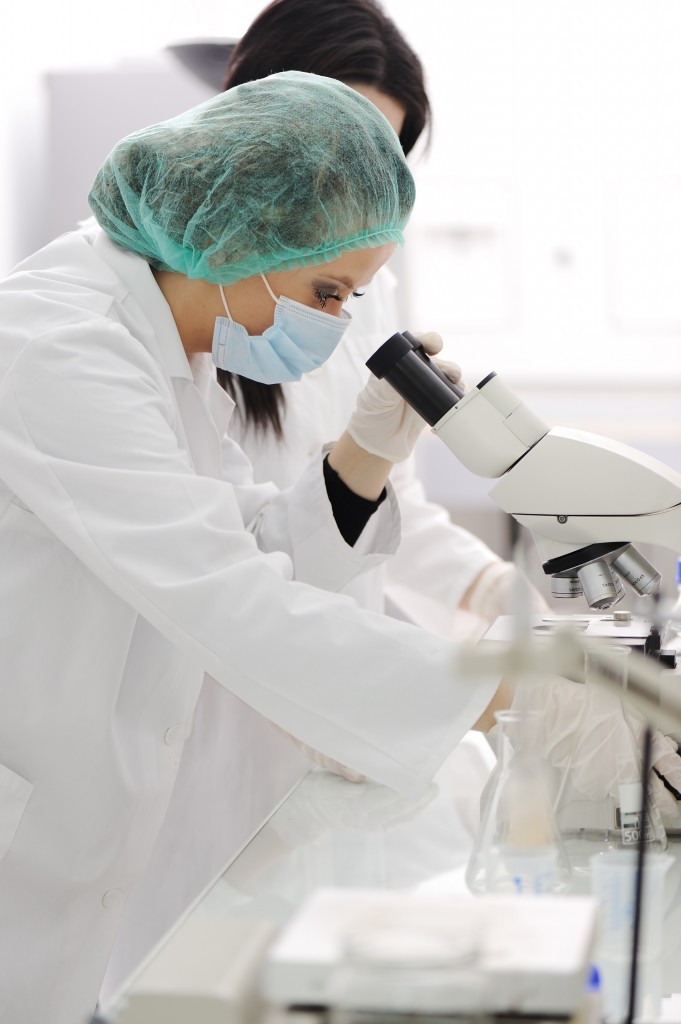Legionella
Full 1-liter sample aliquots (along with swabbed first catch samples when requested) are cultured for water samples. Positive colonies are verified using a direct fluorescence antibody analysis. Regular testing enables facilities to become aware of high Legionella levels before problems arise. There is strong evidence that most potable water systems experience fluctuating levels of this, and other, bacteria. Often times Legionella will be absent from the water for periods of time, but occasional re-occur. Creating a program that enables a water system to handle the occasional exposure to this, and other bacteria, is a good objective.
Legionella is of special concern for hospitals because of its affect on immune compromised individuals. The CDC website suggests to review control procedures when potable water counts are 100 to 1,000/L, and that when counts are higher than 1,000 CFU/L, corrective action should be considered. Cooling towers are also implicated in hospital and community outbreaks. When cooling tower counts climb above 10,000/L, disinfecting should be performed.
Although most of the emphasis is placed on Legionnaires’ disease, Legionella pneumophilia can also cause a milder illness known as Pontiac fever. Generally characterized by chills, headaches, and myalgia, Pontiac fever is often diagnosed as a cold or influenza. However, when a multiple outbreak occurs, testing should be performed as soon as possible to isolate the source.
- Garbe, Paul L., et al. 1985. Nosocomial Legionnaires’ disease; epidemiologic demonstration of cooling towers as a source. JAMA. 254:521-524.
- Gorman, George W. 1985. Legionella anisa. a new species of Legionella isolated from potable waters and a cooling tower. Appl. Environ. Micr. 49(2): 305-309.
- Shands, Katheryn N., et al. 1985. Potable water as a source of Legionnaires’ disease. JAMA. 253(10): 1412-1416.
- Stout, Janet, et al. 1982. Ubiquitousness of Legionella pneumophilia in the water supply of a hospital with endemic Legionnaires’ disease. New Engl. J. Med. 306(8): 466-468
- Alfred M. Emmerson. Emerging Waterborne Infections in Health-Care Settings. CDC website


